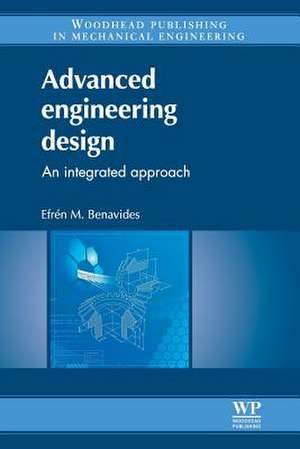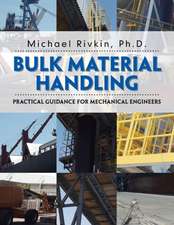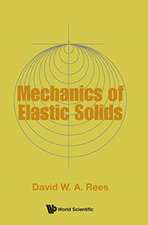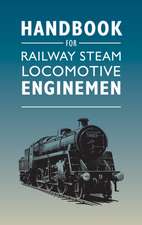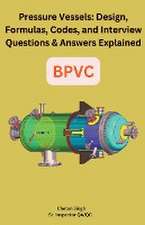Advanced Engineering Design: An Integrated Approach
Autor Efrén M Benavidesen Limba Engleză Paperback – 18 aug 2016
- The design process is defined in terms of operators acting over the information space
- The information content is defined as a difference of entropies
- Creation and destruction of entropy are defined as procedures of the design process
Preț: 768.87 lei
Preț vechi: 1257.56 lei
-39% Nou
Puncte Express: 1153
Preț estimativ în valută:
147.17€ • 159.91$ • 123.70£
147.17€ • 159.91$ • 123.70£
Carte tipărită la comandă
Livrare economică 14-28 aprilie
Preluare comenzi: 021 569.72.76
Specificații
ISBN-13: 9780081016633
ISBN-10: 0081016638
Pagini: 282
Dimensiuni: 156 x 234 x 15 mm
Greutate: 0.4 kg
Editura: ELSEVIER SCIENCE
ISBN-10: 0081016638
Pagini: 282
Dimensiuni: 156 x 234 x 15 mm
Greutate: 0.4 kg
Editura: ELSEVIER SCIENCE
Cuprins
Dedication
List of figures and tables
Acknowledgments
About the author
Chapter 1: The design process
Abstract:
1.1 The concept of design and related terms
1.2 Design as a value-generating process in society
1.3 The goal of design theories
1.4 Background
1.5 The scope of design theories
1.6 The definition of design
1.7 The characteristics of design
1.8 Design problem
1.9 Activities in the design process
1.10 Information management
1.11 The design process as a product
1.12 The importance of the design process
1.13 The importance of Design Science
Chapter 2: Information, entropy and its relationship to design
Abstract:
2.1 The design process in terms of probabilities
2.2 Definition of design
2.3 Uncertainty
2.4 Entropy
2.5 Joint entropy, conditioned entropy and relative entropy
2.6 Mutual information
2.7 Upper and lower bounds of mutual information. Information content of a variable
2.8 Process information
2.9 Spaces of definition: need–solution–response–satisfaction
2.10 Degree of satisfaction
2.11 Conceptual and detailed design
2.12 Operators. Necessary, generated and available information
2.13 First statements
Chapter 3: Axiomatic design
Abstract:
3.1 Introduction to axiomatic design
3.2 Independence axiom
3.3 Information axiom
3.4 Independence of the axioms
3.5 Most relevant theorems and corollaries
3.6 Design process
3.7 Example application in the aeronautical industry: main bearing configuration on a jet engine
3.8 Quantitative study of the design matrix
3.9 Example application: flow and temperature control 54
Chapter 4: Metric design
Abstract:
4.1 Introduction to metric design
4.2 Quality loss
4.3 System design and parameter design
4.4 Tolerance design
4.5 Robust design
4.6 Cost-effectiveness of advanced design techniques
4.7 Example application
Chapter 5: Reliability-based design
Abstract:
5.1 Objective of reliability calculations
5.2 Definition of reliability
5.3 Calculating the probability of failure
5.4 First-Order Reliability Model (FORM)
5.5 Semi-empirical reliability model
5.6 Example application: influence of radial clearance on bearing life with a surface fatigue failure mode
Chapter 6: Entropy-based design
Abstract:
6.1 The Minimum Tolerance Theorem
6.2 The Linearity Theorem
6.3 Example application: conceptual design of a fuel supply system for gasoline engines
6.4 The principle of minimum generation of entropy and information
Appendix: statistical concepts
Index
List of figures and tables
Acknowledgments
About the author
Chapter 1: The design process
Abstract:
1.1 The concept of design and related terms
1.2 Design as a value-generating process in society
1.3 The goal of design theories
1.4 Background
1.5 The scope of design theories
1.6 The definition of design
1.7 The characteristics of design
1.8 Design problem
1.9 Activities in the design process
1.10 Information management
1.11 The design process as a product
1.12 The importance of the design process
1.13 The importance of Design Science
Chapter 2: Information, entropy and its relationship to design
Abstract:
2.1 The design process in terms of probabilities
2.2 Definition of design
2.3 Uncertainty
2.4 Entropy
2.5 Joint entropy, conditioned entropy and relative entropy
2.6 Mutual information
2.7 Upper and lower bounds of mutual information. Information content of a variable
2.8 Process information
2.9 Spaces of definition: need–solution–response–satisfaction
2.10 Degree of satisfaction
2.11 Conceptual and detailed design
2.12 Operators. Necessary, generated and available information
2.13 First statements
Chapter 3: Axiomatic design
Abstract:
3.1 Introduction to axiomatic design
3.2 Independence axiom
3.3 Information axiom
3.4 Independence of the axioms
3.5 Most relevant theorems and corollaries
3.6 Design process
3.7 Example application in the aeronautical industry: main bearing configuration on a jet engine
3.8 Quantitative study of the design matrix
3.9 Example application: flow and temperature control 54
Chapter 4: Metric design
Abstract:
4.1 Introduction to metric design
4.2 Quality loss
4.3 System design and parameter design
4.4 Tolerance design
4.5 Robust design
4.6 Cost-effectiveness of advanced design techniques
4.7 Example application
Chapter 5: Reliability-based design
Abstract:
5.1 Objective of reliability calculations
5.2 Definition of reliability
5.3 Calculating the probability of failure
5.4 First-Order Reliability Model (FORM)
5.5 Semi-empirical reliability model
5.6 Example application: influence of radial clearance on bearing life with a surface fatigue failure mode
Chapter 6: Entropy-based design
Abstract:
6.1 The Minimum Tolerance Theorem
6.2 The Linearity Theorem
6.3 Example application: conceptual design of a fuel supply system for gasoline engines
6.4 The principle of minimum generation of entropy and information
Appendix: statistical concepts
Index
Recenzii
"The author has succeeded with this new book in skillfully collating the different theories and current thinking in engineering design processes." --Materials World, Kevin Edwards FIMMM
